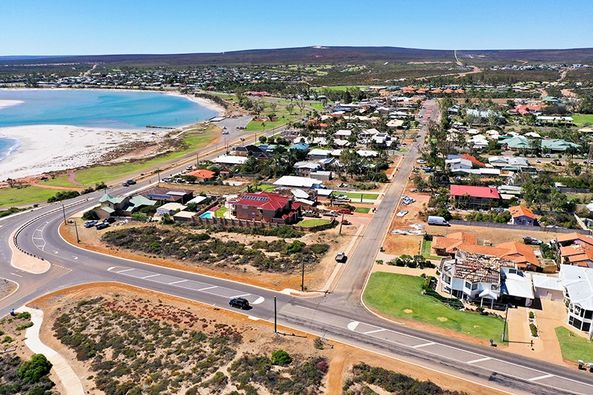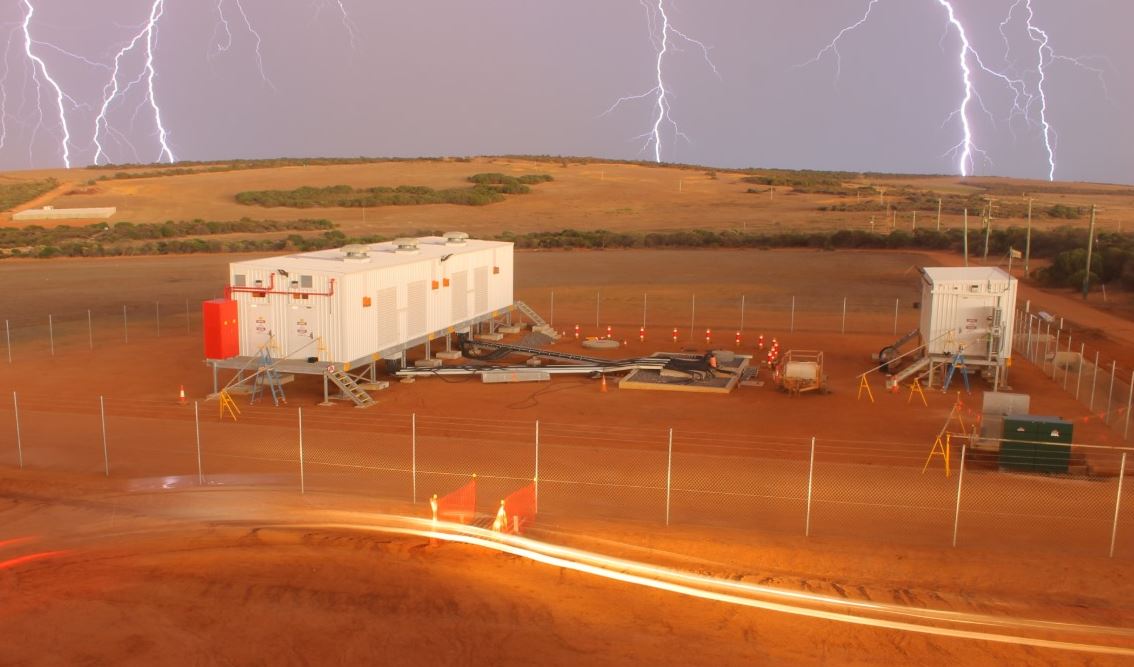Western Australia (WA) grid operator Western Power has announced the Kalbarri microgrid, which will utilise wind and solar PV power, battery energy storage and the grid to improve the reliability of electricity supply to the community on the state’s mid-west coast will be switched on in September ahead of a November launch.
The microgrid will be powered by 1 MW of rooftop solar and a 1.6 MW wind farm and backed by a 5 MW/2 MWh battery energy storage system. The smart system will be connected to the grid and will be able to reverse power flows overnight when stored energy is insufficient to meet demand and disconnect from the larger network should a fault occur.
“It can run independently or connect to the main electricity network. During an outage the microgrid maintains supply to the community using both solar and wind, and stored energy in the battery,” Western Power said.
Western Power said the project will be one of Australia’s largest microgrids capable of operating in complete renewable mode.
First announced in 2016, the microgrid was scheduled to come online more than two years ago but it has been beset by multiple delays, during which the community has been forced to deal with ongoing energy supply problems and extended outages.
A Western Power spokesperson has however told local media the microgrid is on track to become operational early next month when an eight-week trial is expected to commence.
“The microgrid was expected to become operational in June 2021, however this was delayed due to Tropical Cycle Seroja,” the spokesperson told the Geraldton Guardian, referencing the cyclone that ripped through the region in April.
“We’ve also had challenges associated with the loss of a key delivery partner and finding an alternative delivery partner that had the necessary skill set to finalise the project.”

Image: Western Power
The announcement comes as welcome news for the Kalbarri community, which has had to deal with ongoing energy supply problems.
The coastal tourist town, about 600 kilometres north of Perth, is currently supplied by a combination of wind, rooftop and commercial solar systems, and a 140km-long rural feeder line connecting it to the South West Interconnected System (SWIS) at Geraldton.
About 2,000 customers are served by the 33 kV feeder line which is exposed to the elements and susceptible to interference which can cause extended outages.
As recently as August 11 the community endured five power outages in a single day. The disruptions were highlighted in State Parliament last week when the local member questioned Energy Minister Bill Johnston about delivering reliable power for Kalbarri.
The Western Power spokesperson said had the microgrid been in place for recent faults, residents would have experienced no outages.
“While incidents on that line or within the microgrid area can and will still take place, the expectation is for fewer or shorter duration outages,” the spokesperson said.
When power to Kalbarri from the feeder line goes down, the battery will kick in and along with the renewable sources, supply power for a period of time while the fault is repaired.
Western Power has said the Kalbarri microgrid could be used as a blueprint for other regional areas and help in the development of further renewable generation across the rural edges of the electricity network.
This content is protected by copyright and may not be reused. If you want to cooperate with us and would like to reuse some of our content, please contact: editors@pv-magazine.com.









1 comment
By submitting this form you agree to pv magazine using your data for the purposes of publishing your comment.
Your personal data will only be disclosed or otherwise transmitted to third parties for the purposes of spam filtering or if this is necessary for technical maintenance of the website. Any other transfer to third parties will not take place unless this is justified on the basis of applicable data protection regulations or if pv magazine is legally obliged to do so.
You may revoke this consent at any time with effect for the future, in which case your personal data will be deleted immediately. Otherwise, your data will be deleted if pv magazine has processed your request or the purpose of data storage is fulfilled.
Further information on data privacy can be found in our Data Protection Policy.